Cybertrucks on the Colorado
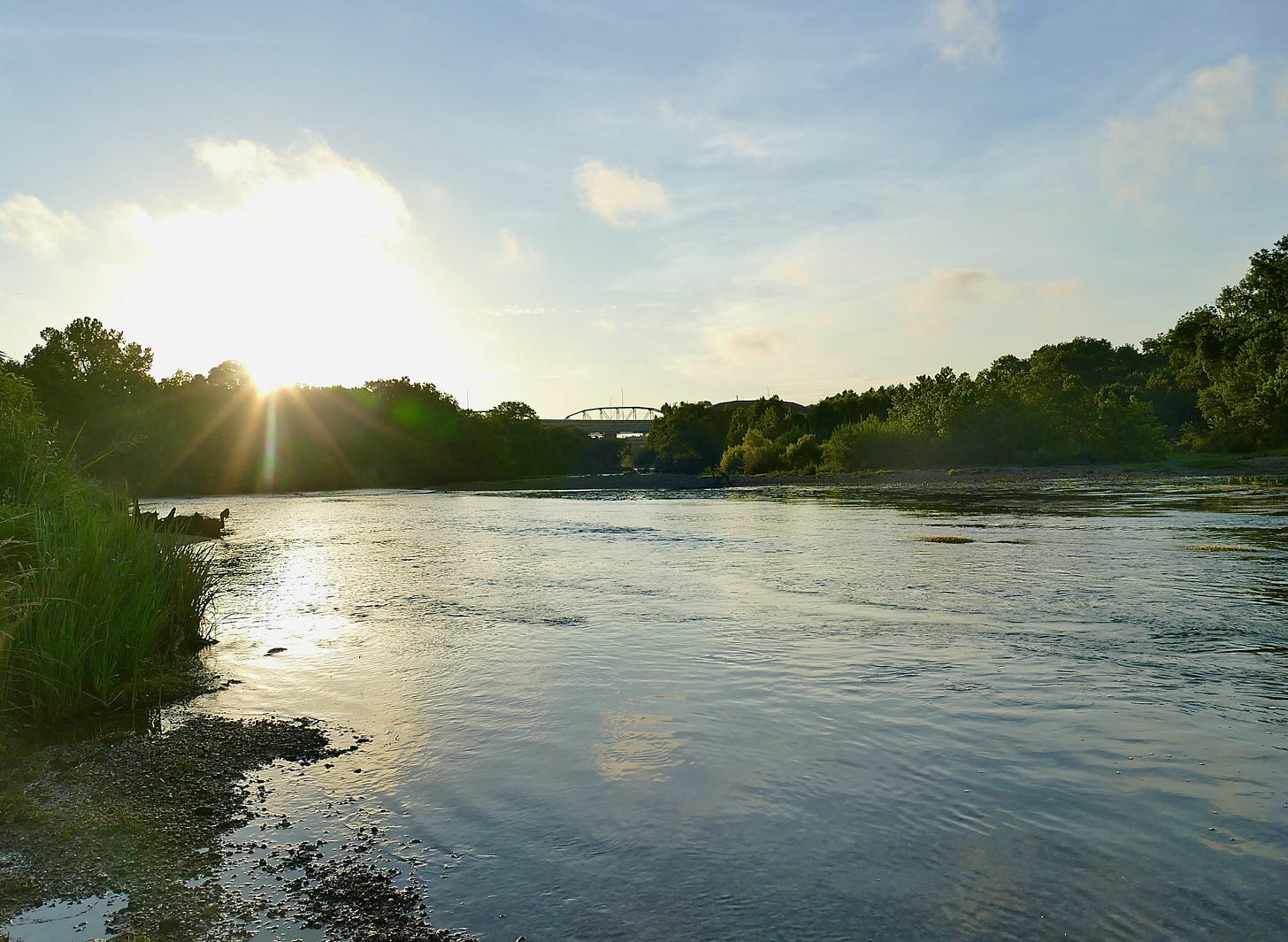
Saturday morning I took the dogs out at sunup to enjoy the cooler air the hurricane winds had brought. We followed the old right of way behind the door factory, clambering over the fallen branches of high summer. We found some new animal trails and a fresh burrow by one of the drainage culverts. The foliage was denser than I expected behind the drywall warehouse, and I had to crouch almost to the level of the dogs to get through. In the big open fields behind the dairy plant the Johnson grass had grown so tall and thick that the dogs could barely push through it, so we worked our way down into the woods, where the shade-friendly grasses of spring have already browned out and opened up the understory to bushwhackers.
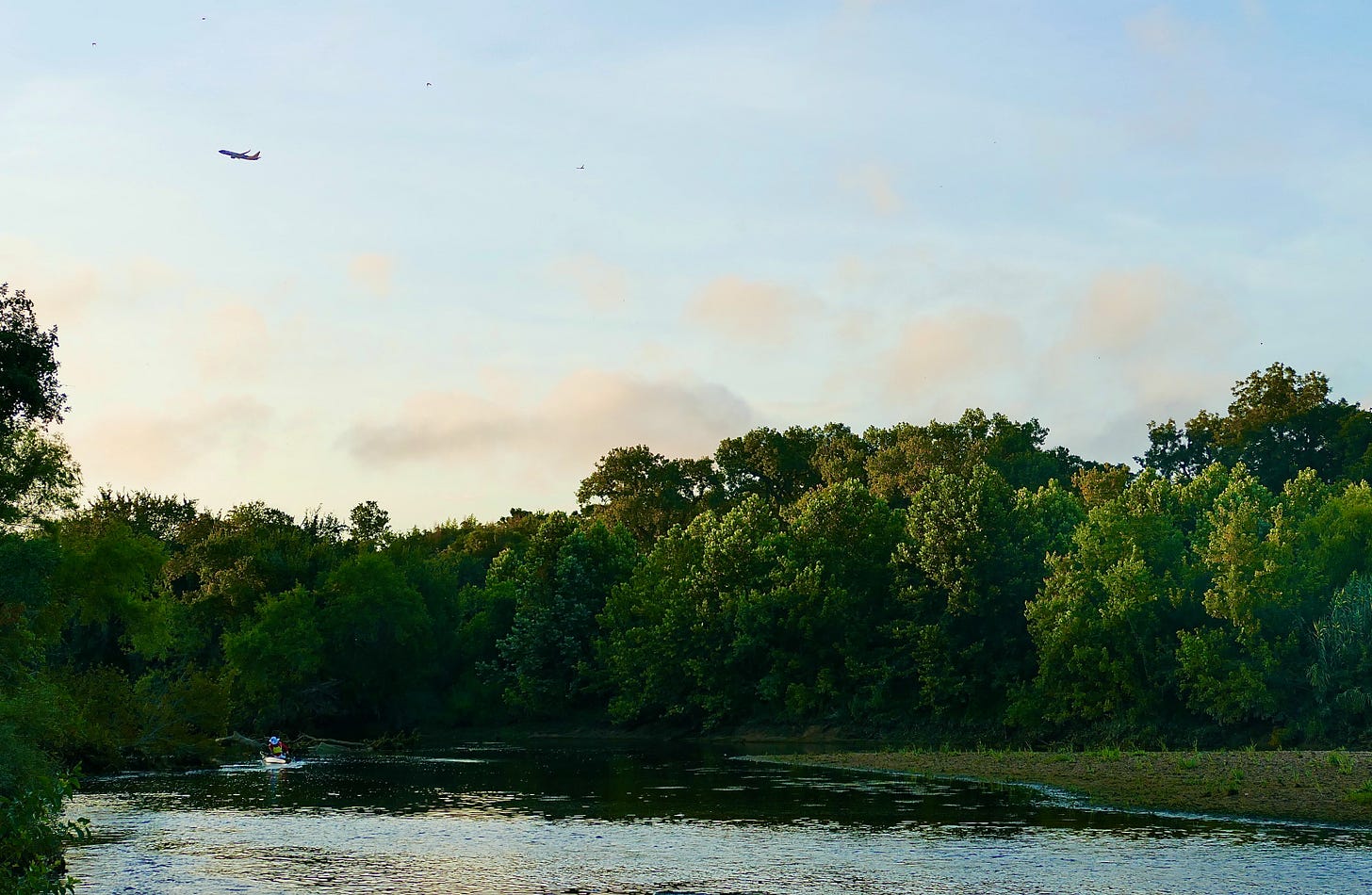
The sun was just peeking over the horizon when we got to the river, splashing the last dapples of pink on the low-lying clouds. There was one dude there in a fancy solo performance canoe putting in by the wide shallows as we stepped out of the woods. He didn’t see us, too busy trying not to scrape his bottom on the shoals. So we watched him paddle down toward the bridge in the crisp morning water as a squawking quartet of black-bellied whistling ducks flew off in the same direction, and a Southwest 737 took off for Love Field.

There’s a little wetland tucked back by that spot, where the municipal drainage pipes bring storm water off the parking lots and roads into a little trash-littered lagoon that then narrows and meanders through these weird woods. In a spot that a few decades ago was probably part of the river now are a few acres of muck where the water grasses grow lush by the end of July. It’s the only place anywhere around these woods that I have ever seen a bunny, presumably because the hiding is so good in that green labyrinth. The creek bed was tracked with the sign of raccoons returning from their night’s forages, and later we found another spot where they had recently excavated and devoured the contents of unhatched turtle eggs from the bank. Thieves like us.
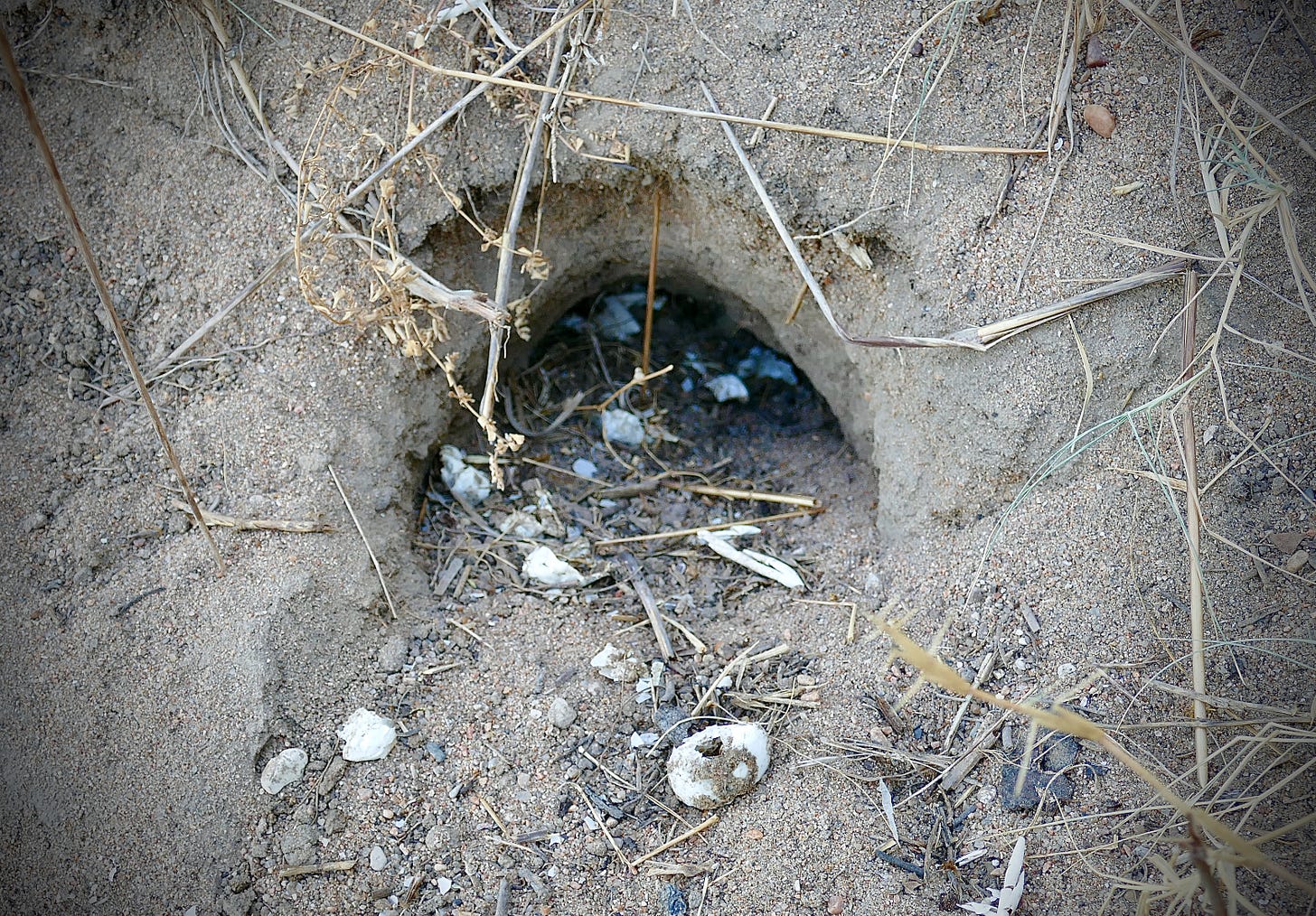
In the summer they release water from the dam every day to provide water to rice farmers downriver. In the early morning the water is down, and it’s easier to walk in the river than along the banks in most spots, where the riparian foliage has grown thick. The heavy flows alter the river bottom, and stretches that were too deep to walk through a few weeks ago are now shallow enough to wade, though in the last stretch that’s normally just a few inches deep the dogs ended up swimming in water that came up to my thighs. On the opposite bank we passed a sand and clay cliff face rapidly dropping into the river that provides perfect habitat for the kingfishers, who nest in little holes in such faces and patrol that stretch all morning long. We saw just one, chilling on a big log by a patch of the exotic bamboo someone planted at the abandoned trailer park.
There are power lines running along that cliff face, getting closer to the edge every time it rains. The hawks sometimes perch up there, watching over the wide vantage of the river. Saturday morning there was a scissor-tailed flycatcher on the wire, grabbing mayflies from the air. Closer by, an egret was working the shallows, letting us get unusually close before it flew to the opposite side and continue its prowl.
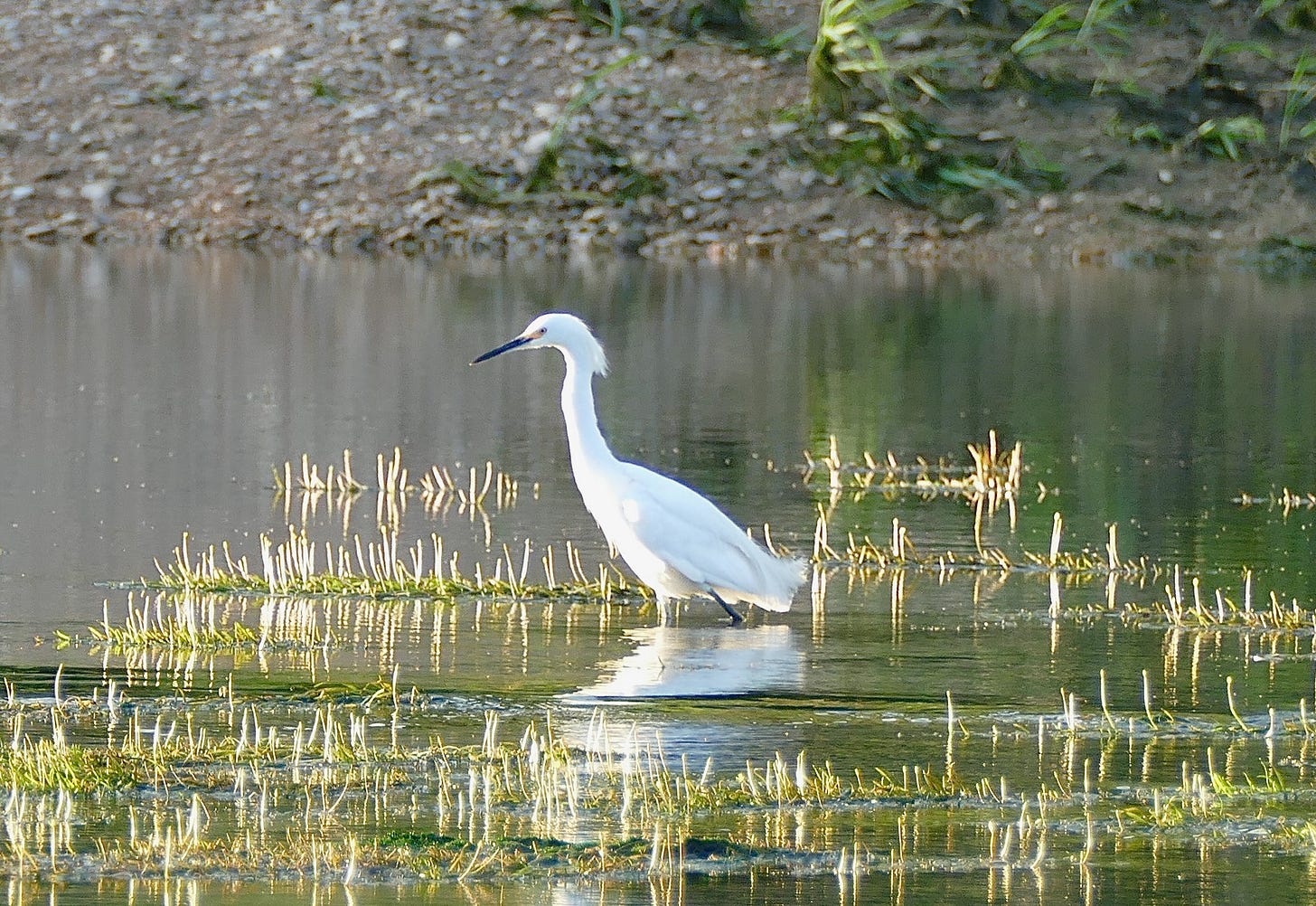
A little further on, not far from where we found the turtle eggs, a lone black vulture was chilling on a big telephone pole, reminding me of the other excursion I had planned for the day.
Prepper Luxe
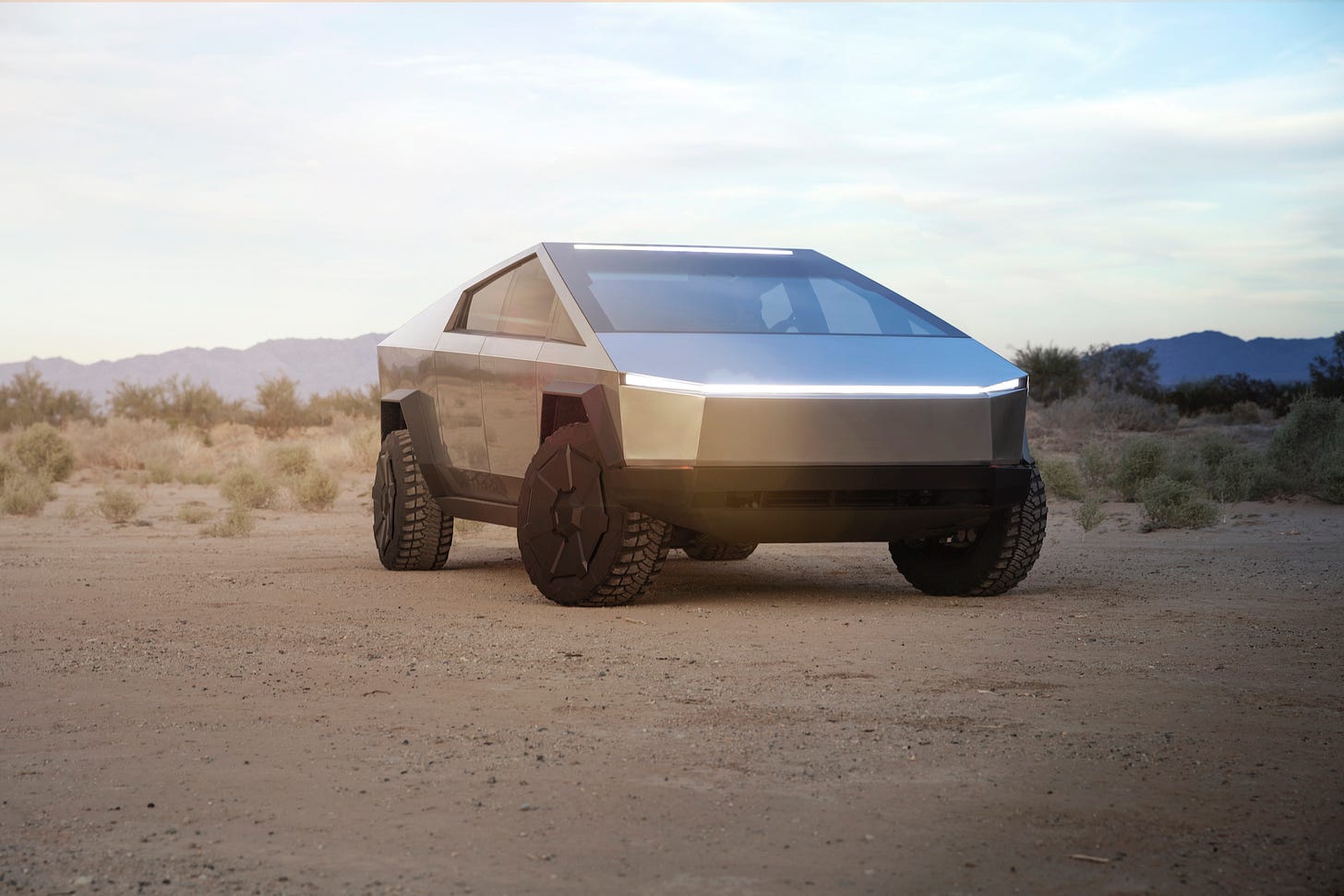
The big local business news this week here in Austin was the announcement of the Chamber of Commerce’s pandemic hat trick: persuading Elon Musk and his electric elves to build the new Tesla plant just outside the city limits in eastern Travis County. The site is an old Martin Marietta sand and gravel quarry on the Colorado, a 15-minute drive from where we live, and maybe a few hours paddle down the river, which takes a more circuitous route than the roads as it winds slowly through the flat alluvial plains where the Hill Country drains out in the direction of the coast. Saturday morning I went to check the site out before the hurricane rains, and before they start closing it off, as Musk claimed in the news reports that they had already begun site prep.
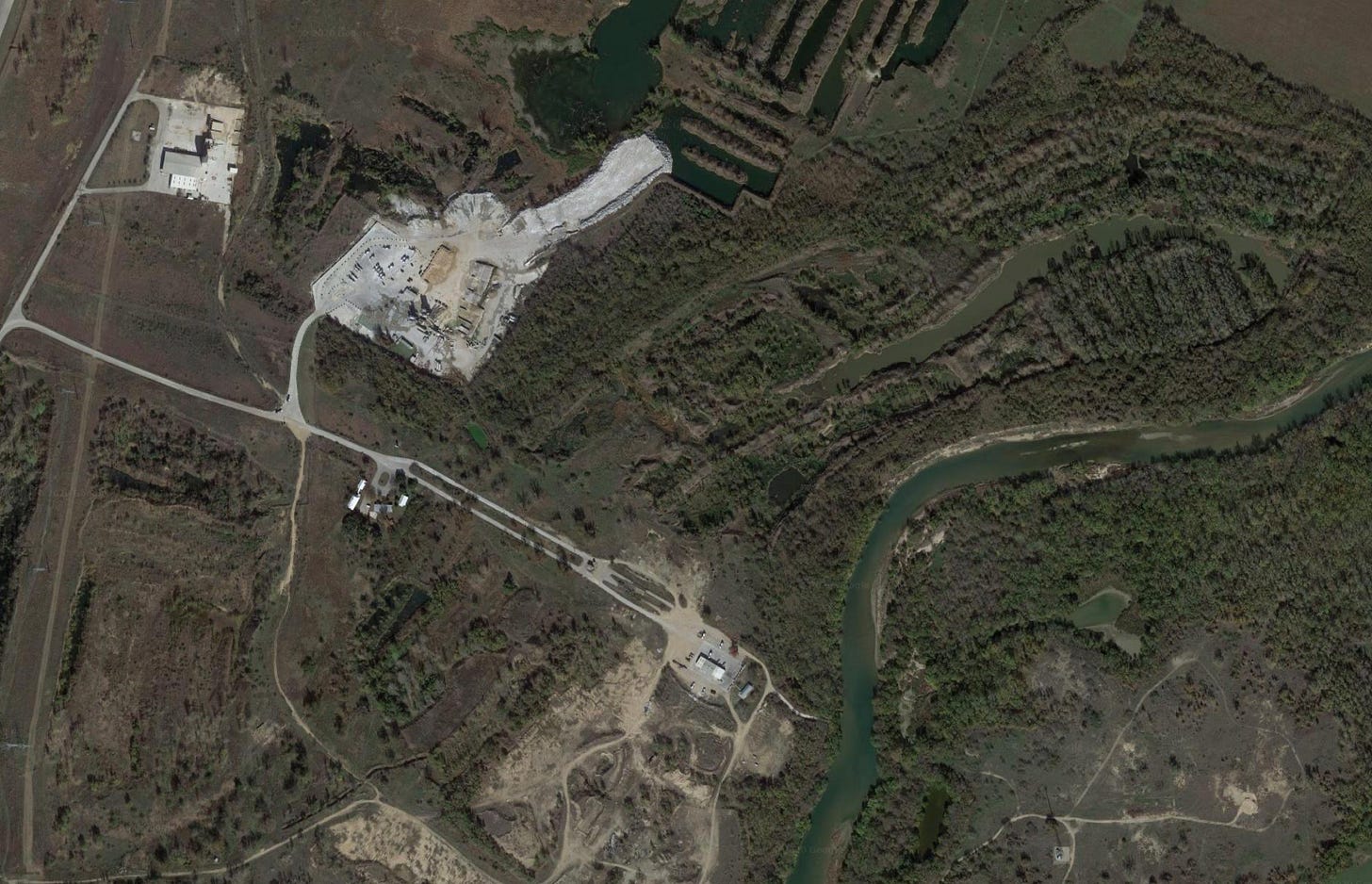
I checked it out on Street View before going, and it looked like it was mostly open and accessible. You could see Google’s nine-eyed camera car had gotten almost to the river. But when I got there mid-morning Saturday the site was insanely busy with convoys of trucks running heavy loads of gravel to construction sites, as if they needed to get it all out of there before they ran out of time. The road to the river was blocked by a guarded gate, and the older quarry closer to the highway was locked off and deserted but too busy with human activity for a fence-jumping investigation. I’ll have to go back some Sunday morning by canoe, before they start guarding it with Terminators.
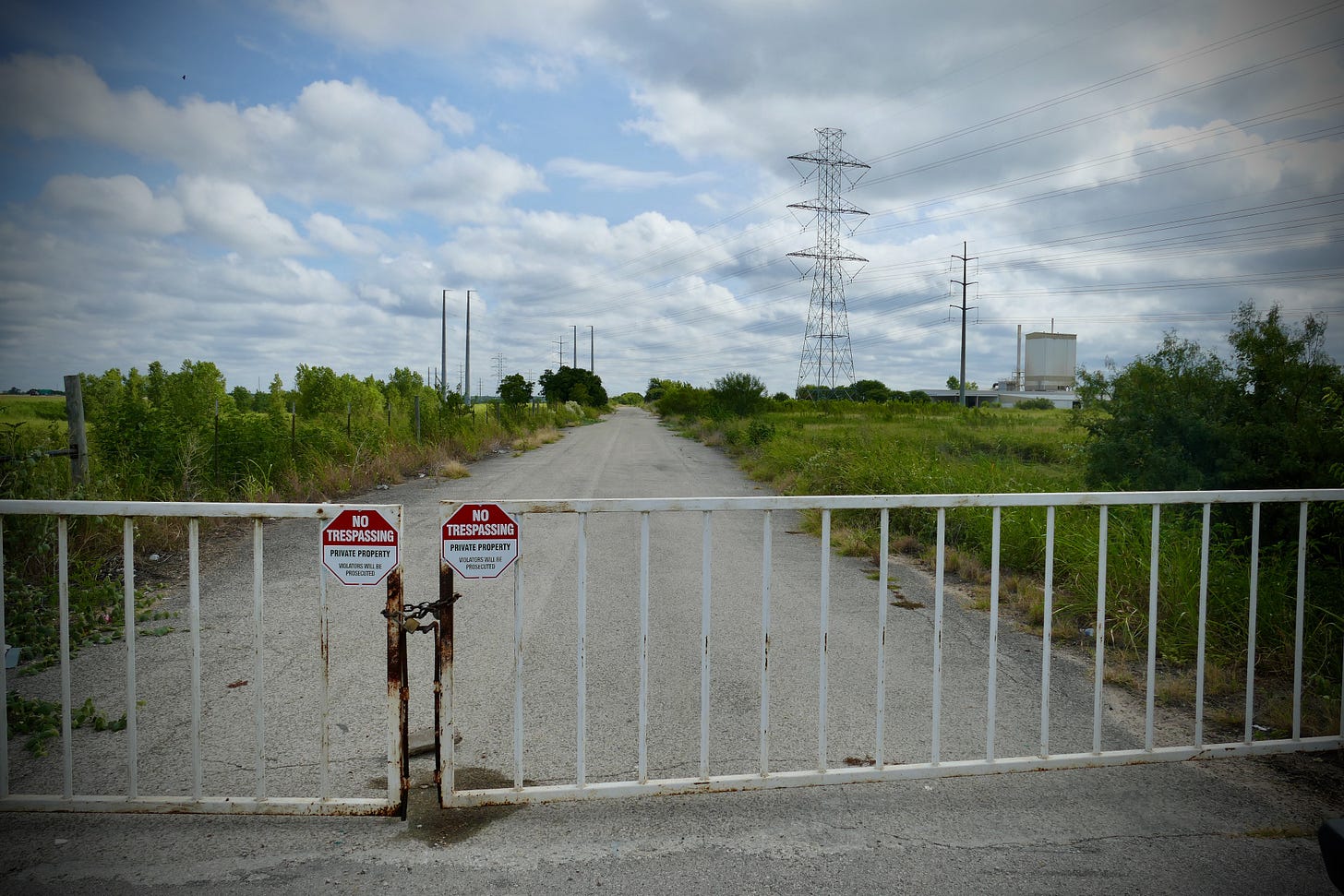
The factory is where Tesla will make its new Cybertruck, the supposedly indestructible vehicle Musk famously busted the glass on during the launch demo. It’s a name guaranteed to make a science fiction writer laugh, and you can imagine those guys high-fiving each other in the conference room when they came up with it. I’m all for electric pickups. I tried to get one of the first electric Rangers when Ford test-leased them 20 years ago, and we have an electric station wagon now, along with our more work-ready ‘87 Land Cruiser. But the Cybertruck has something different than just green utility going on—the tech may be cyberpunk, but the commercial is all about the cozy catastrophe. And that seems like a great marketing angle for the right now.
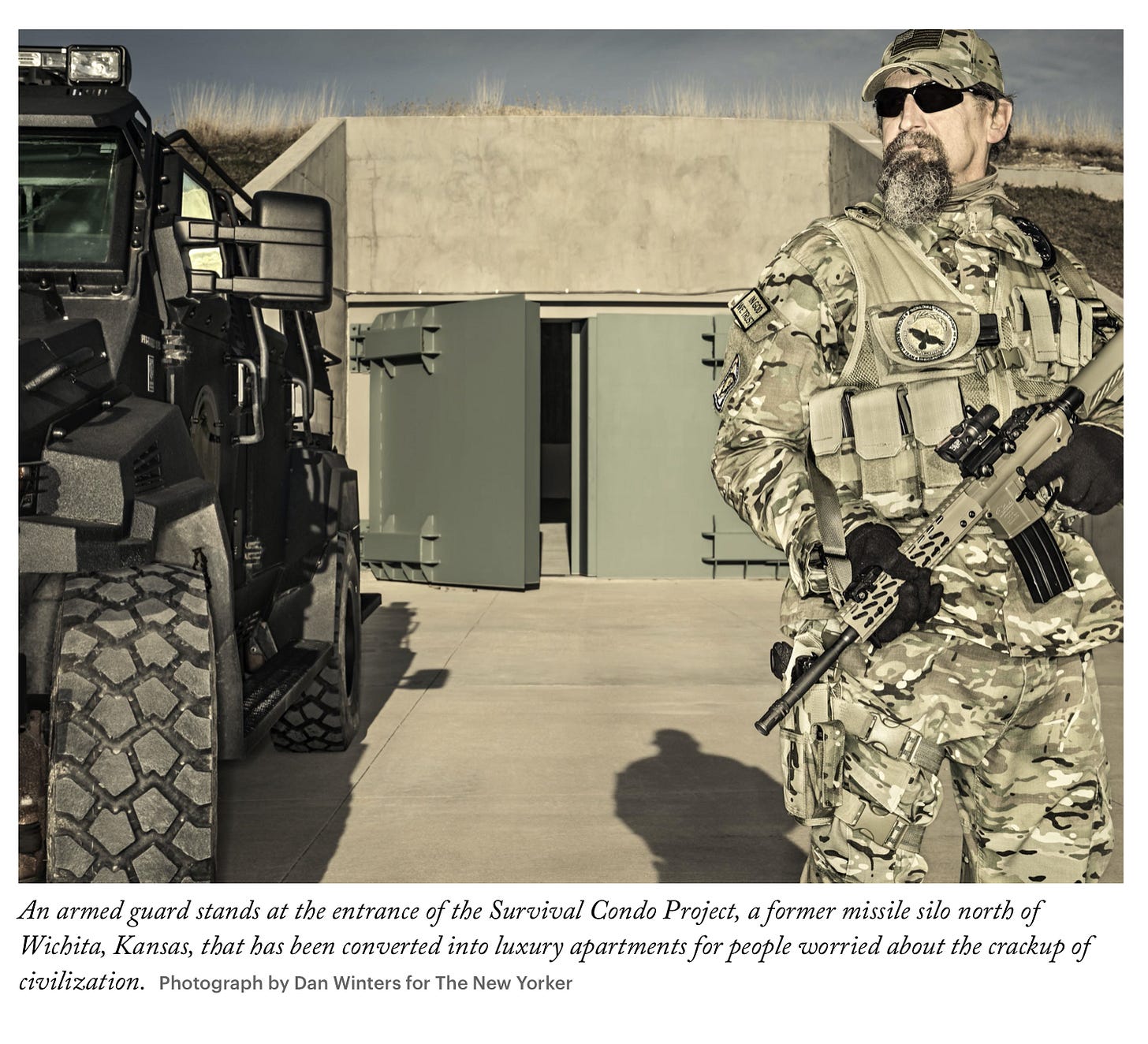
Even before the pandemic and the civil war-like scenes that have filled our feeds this summer, there have been numerous stories about the increasing popularity of prepper culture among some of the wealthiest Americans, especially techies weaned on narratives of sci-fi disaster. I read two of those in the past few years that really stuck with me: Evan Osnos’s New Yorker piece “Doomsday Prep for the Super-Rich” (from which the above photo was taken) and Doug Rushkoff’s “Survival of the Richest.” Both stories provide insider views of the luxury bunker culture preparing for the collapse of civilization. The American coin may be losing its luster, but we are still winning the Mineshaft Gap.
Armored and purportedly indestructible, the Cybertruck is the car those guys will keep charged in the garage and ready to drive to the survival condo when the ungrateful mobs turn their penthouses into autonomous zones. An event many of them are no doubt secretly looking forward to. When the vehicle was introduced last fall, I immediately thought its designers must have consciously copied the aesthetics of the Landmaster—the vehicle Jan-Michael Vincent drove across the post-apocalyptic wastelands of 1977’s Damnation Alley.
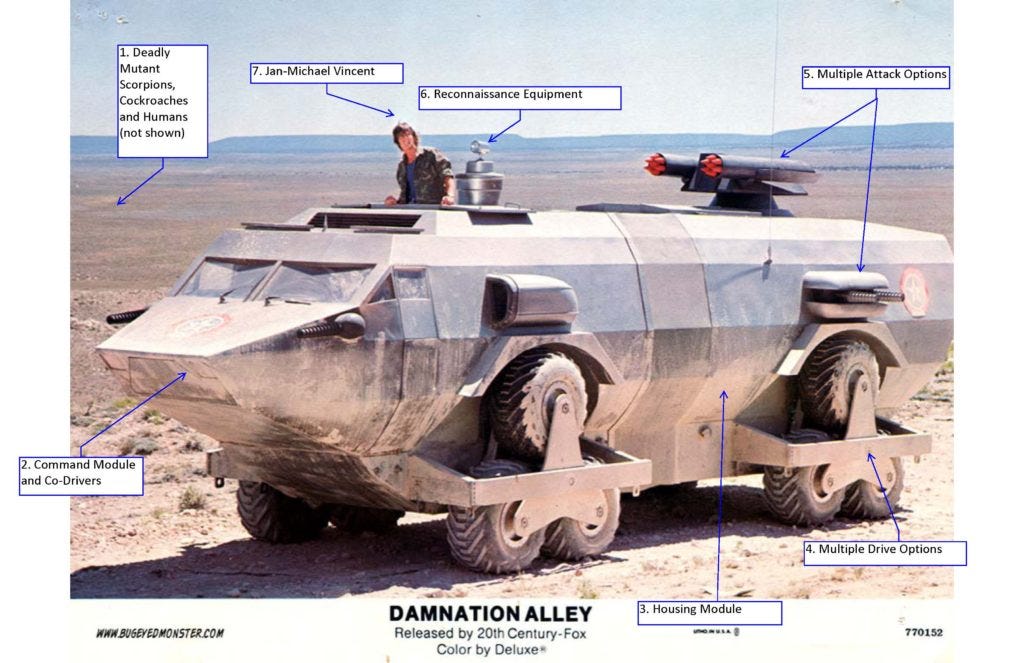
As Gizmodo’s reviewer astutely commented when the vehicle was announced, “The Cybertruck is a Vision for a Dystopian Climate Future.”
I thought about that again as I drove away from the Tesla site, maybe in part because my quarantine hair is now starting to look a fair bit like Jan-Michael Vincent circa 1977. But just down the road, I found some people who seemed a lot more apocalypse-ready than any of those hedge fund preppers trying to figure out how to use their accumulated millions to survive the coming chaos.
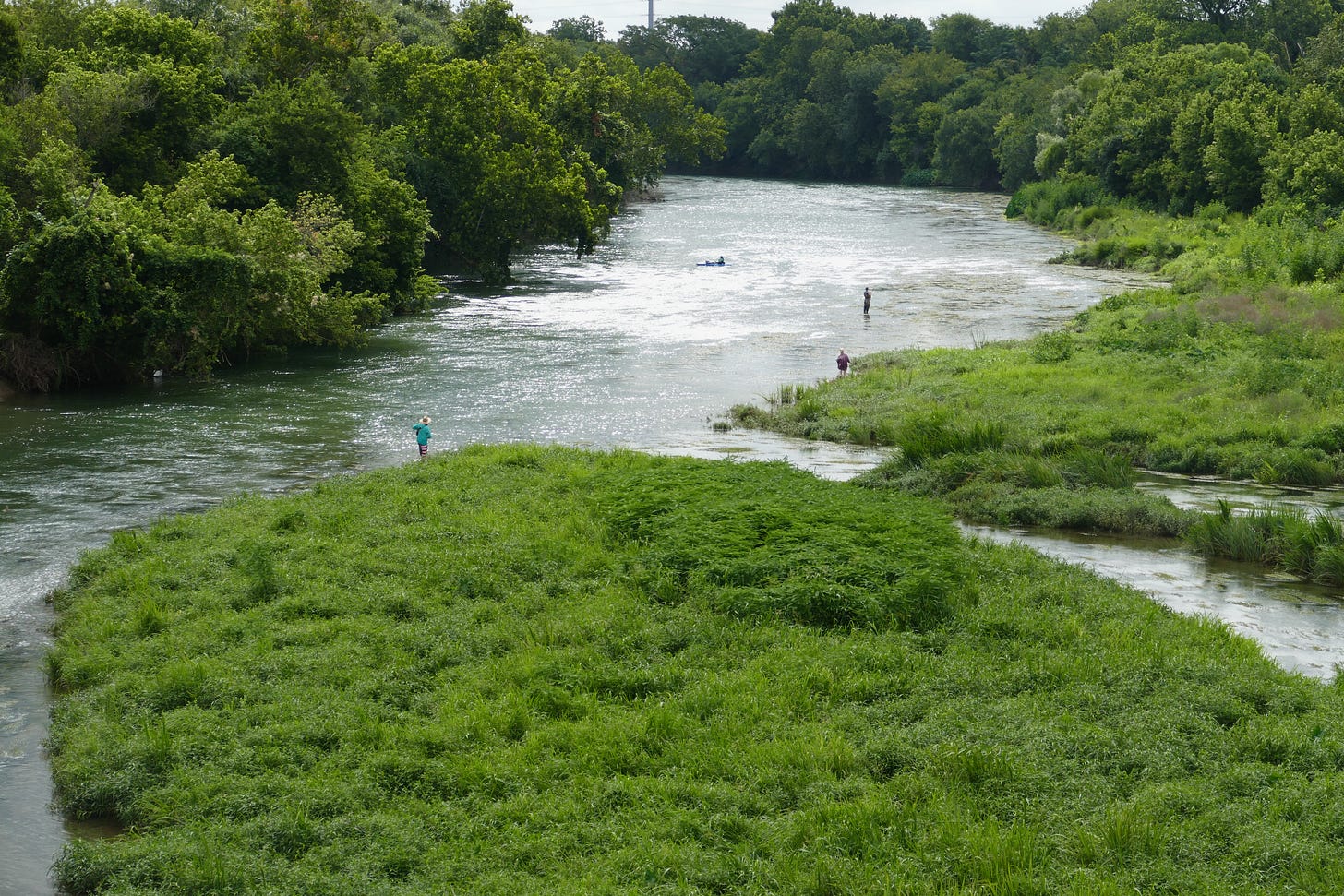
It’s a beautiful thing to see in the shadow of an airport, an urban river gone so wild that the islands are thick with nature’s green shag carpet, and the fly fishermen come out to play a few minutes from downtown. I pulled over and walked down to enjoy it myself. The spot is right at Hornsby Bend, where the first Anglo settlers made their homes (including the scalping survivor whose tale I told a few months back), and where the city has turned a water treatment plant into an eco-preserve, which no doubt helps with the fishery.
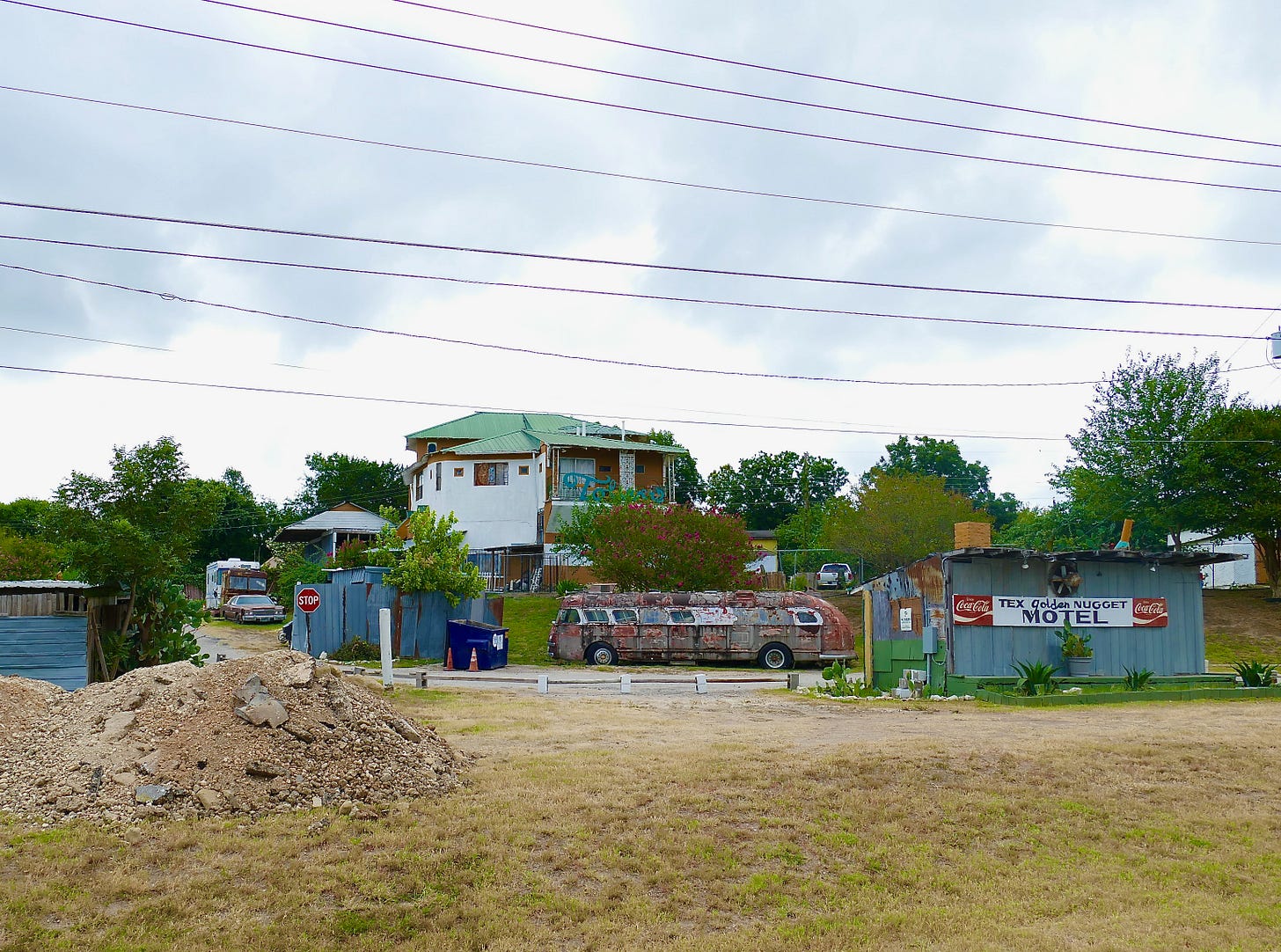
As I walked to the other side I came upon what looked like the poor man’s version of those apocalypse bunkers—a weird “motel” that looked to have been constructed entirely from salvaged materials, with its entry fortified by metal walls and a big old bus ready to be pulled in to block it, a lot like the utopian compound in The Road Warrior. I looked closer and saw some kids back in there playing, and one beautiful beached Eldorado. I hear they’ve been shooting Fear of the Walking Dead in Austin, maybe this is one of the sets. Or maybe it’s a place where people are already helping each other survive the challenges of the present, the way people usually do in times of disaster, disproving the Hobbesian expectations our fictions teach us.
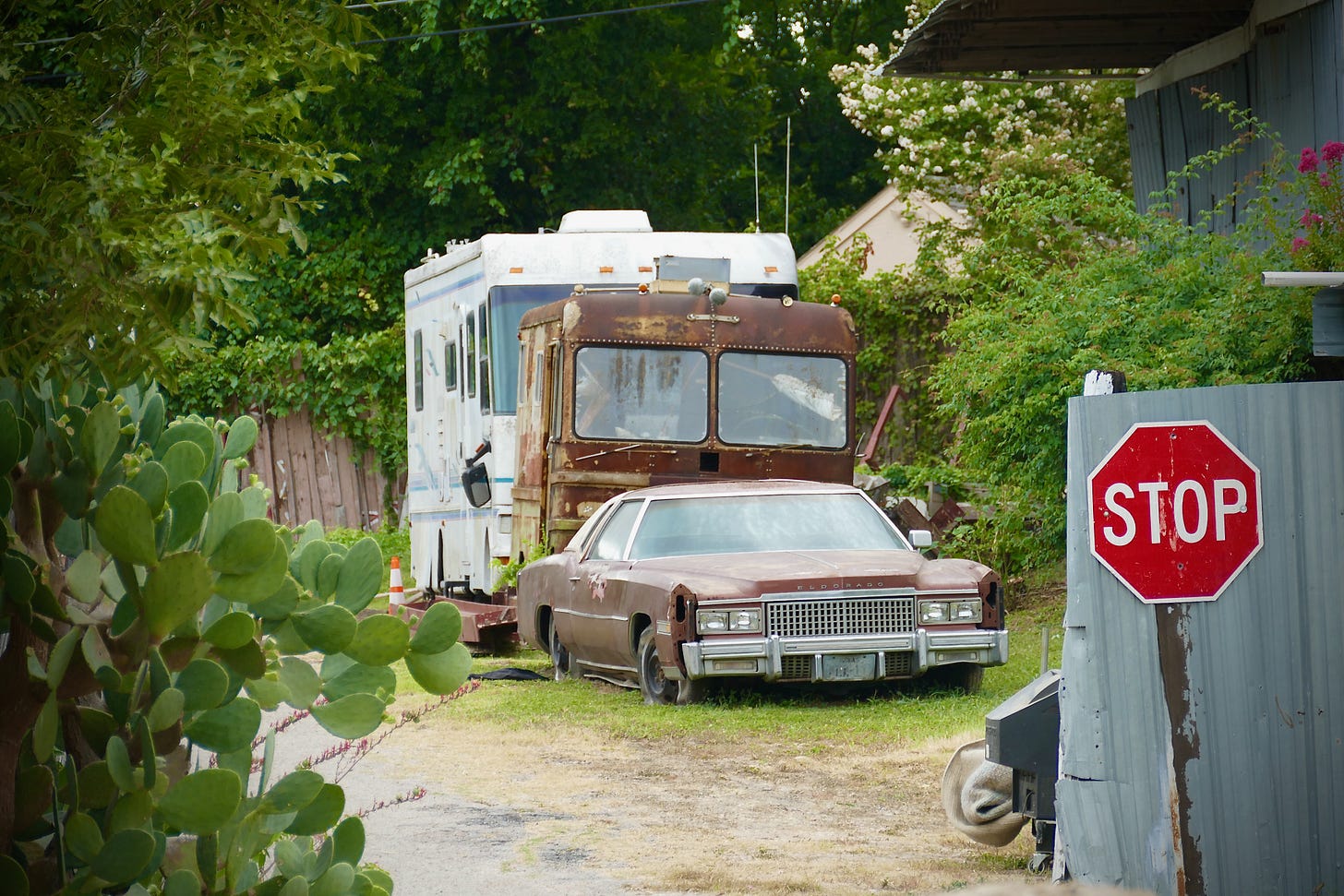
The apocalypse fictions of my youth expressed our fears of nuclear annihilation, but they often also articulated fantasies of dominion, of an invigorating return to the primitive without having to give up all the trappings of civilization. Lurking in the aesthetics of those stories, with their overgrown buildings and drowned cities, was a deeper yearning for the restoration of the wild—a sense that is what a healthier future really looked like. Not a world without us, but one with the balance back in nature’s favor.
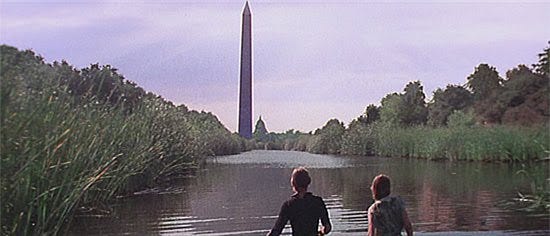
At least, if his quote in Thursday’s paper is to be believed, Musk sees some of that utopian possibility, even in the backyard of his dystopia-ready Cybertruck factory:
“We are going to make it a factory that is going to be stunning. It is right on the Colorado River. So we are actually going to have a boardwalk where there will be a hike and biking trail. It is basically going to be an ecological paradise—birds in the trees, butterflies, fish in the stream. And it will be open to the public, not closed and only open to Tesla.”
Green factory as intentional park is not a bad vision, even if it sounds like vaporware. And even if the paradise is already there, hiding in plain sight. Hopefully, as other development follows Tesla into the old farmlands and gravel pits east of town, we can manage to preserve the wild riverine greenbelt that has survived our presence mostly through our inattention.
Ennio Morricone, R.I.P.
As I drove back from my field trip, Jay Robillard was spinning Ennio Morricone tracks on KOOP’s The Lounge Show (the Saturday broadcast that engendered the slogan “Keep Austin Weird”). Morricone’s music was on my mind a lot the last year, as I riffed on the story type from Yojimbo and For a Few Dollars More while working on my new book, sometimes playing John Zorn’s covers of Morricone’s gangster movie soundtracks on The Big Gundown as I wrote. I whistled a few of the Western scores for baby as we jogged with the stroller earlier in the week, but I’m not sure it’s her thing. Here’s my current favorite:
Failed State Virtual Launch August 12
Speaking of my new book, a reminder that it will be coming out two weeks from Tuesday, and that on Wednesday, August 12, Austin’s oldest independent bookstore BookPeople will be hosting a virtual launch event at which I will be reading from the book and in conversation with my colleague Cory Doctorow and with the audience. BookPeople is taking preorders, including for signed copies, so if you’re interested in the book please consider supporting them. I hope to see some of you at the event—details here. Because of the strange publishing circumstances of quarantine, I haven’t even seen a physical copy of the book yet, but they are starting to appear in the wild.
Thanks for reading and have a great week.

